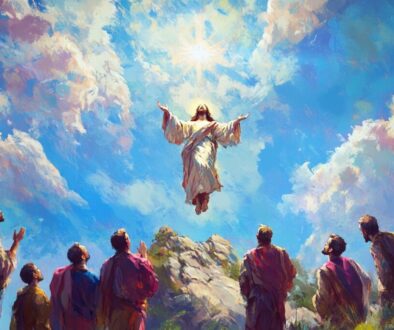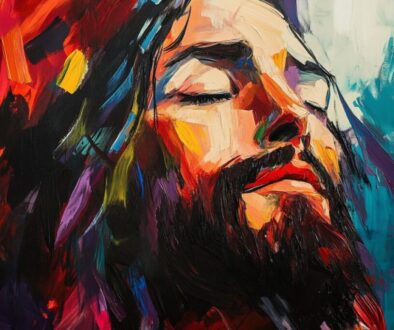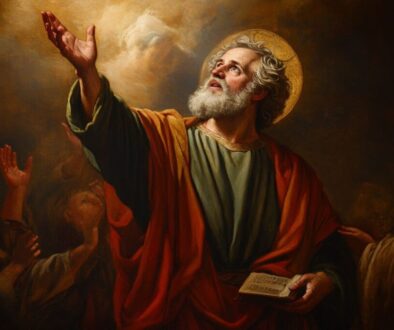Epiphany – Sermon by Father Levine

Fr. Joseph Levine; Holy Family Catholic Church, Burns, Oregon, and Missions; January 8, 2023
After the star came to rest over the place where the child was, the Magi entered the house, saw the child in the arms of his Mother, Mary, and then prostrated themselves in adoration, offering their gifts of gold, frankincense, and myrrh.
Between the time of Jesus’ birth in the manger to the time of the arrival of the Magi, the Holy Family appears to have found more adequate lodging, perhaps with some relative of Joseph. Nevertheless, the house in today’s Gospel was no doubt a simple and lowly dwelling.
What did the people of Bethlehem see, between the time of Jesus’ birth and the time of the arrival of the Magi? A lowly father and mother with their baby boy, staying with their relatives. Nothing special. A completely ordinary scene. The identity of the Son of God was hidden from their eyes.
The Magi arrive. They may not be actual ‘kings’ but they are certainly men of culture, learning, and wealth. The star arrives ahead of the Magi, shedding a supernatural light upon the simple scene. When the Magi enter it is as though the scene is transformed by the presence of the heavenly light.
Jesus said, No one can come to me unless the Father who sent me draws him … Everyone who has heard and learned from the Father comes to me. (Jn 6:44,45) The Father draws men to the Son through the Holy Spirit. No one can say, ‘Jesus is Lord’, except by the Holy Spirit. (1 Cor12:3)
The Holy Spirit works both externally and internally. The Holy Spirit speaks outwardly through the Sacred Scriptures that he inspired. At Jesus’ baptism, the Holy Spirit appeared in the sign of the dove over the head of Jesus; at the Transfiguration, he appeared in the cloud; at Pentecost, he appeared over the disciples in tongues of fire.
At the same time, it is the Holy Spirit who works internally, enabling the soul to understand the word of God, to recognize the sign, and to make an act of faith.
At the Visitation, when Elizabeth felt the infant John leap in her womb, the Holy Spirit taught her interiorly to recognize the Lord and his Mother. (cf. Lk 1:41-43)
When Mary and Joseph brought Jesus to present him in the Temple, there was no visible sign besides that of the Temple itself, but the Holy Simeon, who had learned the prophecies, was guided to the Temple by the Holy Spirit and recognized in Jesus’ the fulfillment of those same prophecies, the light of revelation to the nations and the glory of Israel. (cf. Lk 2:25-27,32)
So also, the Father drew the Magi to the child Jesus. He had taught them from the word of God that a star was to rise in Jacob (Gen 24:17), he completed that instruction through erudition of the scribes in Jerusalem, he showed them the visible sign of the star, and he had sent the Holy Spirit to teach them in their hearts. They showed by their gifts that they had been taught by God. (cf. Jn 6:45) The gold was given in honor of the King of kings, the frankincense, an offering to the Son of God, and the myrrh was a prophecy of the suffering of our Savior and High Priest.
The light of the star, we could say, transformed the visible appearance of the simple room, revealing the glory of the Son of God made man. That light is available to all those who are drawn by the Father, who have believed the word of God, whose heart is illumined by the Holy Spirit, and bow in living faith before Jesus Christ, the Son of God. This means saying to Jesus, “I put myself beneath your feet; I want you to rule over me; I put my trust in you.” There is our gold, frankincense, and myrrh.
Now, however, the star does not guide us to Bethlehem in the Middle East, and to an infant wrapped in swaddling clothes, but to a Catholic church, to a Mass, or to a tabernacle or a monstrance, and to the frail appearance of bread, shown to us by our holy Mother, the Church. Believing the words of Jesus, This is my Body, This is the chalice of my Blood, and moved by the Holy Spirit, we behold the sacred host and, like St. Thomas, say, My Lord and my God! (Jn 20:28)
Now, just as the outward appearances of child and Mother, when the Magi entered the house, was plain and simple, so the appearance of bread and wine is plain and simple, so some one might think that the Mass should be equally plain and simple. That, however, would be to fail to understand the meaning of the star, the Magi themselves, and their gifts.
The child Jesus was a visible, human reality, who was himself a sign of the invisible reality of the hidden godhead he shares with the Father and the Holy Spirit. Yet, for our sake, the visible sign of his humanity needed to be made manifest by the visible sign of the star. Then, when the Magi prostrated themselves before him and offered their gifts, they became a visible sign and example for future generations.
The classic definition of a sacrament is a visible sign of invisible grace. The sacraments follow the pattern of the child Jesus, in whom the invisible reality of the godhead is hidden. Like Jesus, they need to be pointed out by a ‘star’ and receive the testimony of the adoration and gifts of the faithful.
The rites of the Church, received from Tradition, are like the star. The adoration and the gifts of the faithful have two aspects, the outward gift of what is best, the outward acts of reverence (like kneeling), and the inward submission to the will of God and the offering of one’s own life, in faith, hope, and charity.
We can also consider the relation between the outward and inward, exterior and interior in the relation between Jerusalem and Bethlehem. The road to Bethlehem needed to go by way of Jerusalem; only by passing through Jerusalem and receiving the fulness of the divine teaching, could the Magi find the holy Infant in Bethlehem. The more difficult part of their journey was just getting to Jerusalem. From there the journey to Bethlehem was but a short and easy step, only seven miles or so.
Yet no one from Jerusalem made the trip, only the Magi. Herod was interested in the child, only to kill him and sought to use the Magi as his spies. The scribes were able to say where the child was born but showed no interest in rendering him homage. Nor did the people of Jerusalem, who had heard of the arrival of the Magi and their questioning about the newborn king of the Jews. Like Herod, the were greatly troubled by the news. They were all fundamentally content with the ‘status quo’, whatever its problems, and saw the news of the birth as a threat to that ‘status quo’.
So it can be in the Church. The teaching of the Church tells us all we need to know about God, about Jesus Christ, and about his way of life; all we need for our salvation. It is possible to attend Mass every Sunday, say your prayers every day, even obey the commandments of God, like the rich young man in the Gospel, and yet never make the trip from Jerusalem to Bethlehem, to adore the Son of God in spirit and truth. It is possible to live outwardly as a Catholic yet fail to enter into the heart of the faith.
Herod was a tyrant and there was plenty for the people of Jerusalem to complain about, but for all that they had adjusted themselves to the tyranny and had become comfortable in their slavery. So too there is plenty to complain about in the Catholic Church, things are far from perfect, but people can be comfortable with a religious routine that makes them feel good about themselves.
But let someone come from far off, seeking the truth, and taking the Catholic faith seriously, his very presence can be troubling, a challenge to the complacency of the comfortable.
Why make the journey to Bethlehem?
Well, it is the difference between the living dead and the truly alive. The passage from Jerusalem to Bethlehem is like the passage from hearing the word of God to putting it into practice, foolishly building your house on sand or wisely building it upon rock. (cf. Mt 7:24-27) The passage from Jerusalem to Bethlehem is like the difference between bodily presence at Mass and truly participating in faith, hope, and charity. The passage from Jerusalem to Bethlehem is like the passage from the letter of the old Covenant to the spirit of the new Covenant. The passage from Jerusalem to Bethlehem is like the difference between doing Catholic things from human motives or acting under the impulse of the gifts of the Holy Spirit and so coming truly to know the Lord. (cf. 31:34) All who are led by the Spirit of God are sons of God. (Rm 8:14)
Finally, the Magi returned to their country by another way.
Literally, the Magi came to know that Herod was not to be trusted. Symbolically, anyone who has made the journey from Jerusalem to Bethlehem and so come to know the Lord is transformed by the experience of the reality. The faith professed is no longer just a matter of mere words but begins to shape from within the person’s whole way of thinking, feeling, and acting. The commandments are no longer a burden, but a joy. Such a person cannot return to the superficial routine. For such a person the rituals of our faith are no longer empty appearances. They become ‘epiphanies’ radiant with heavenly light.
(Related: Easter 2022 – Sermon by Father Levine)
Seek a Deeper Connection with God and Join Lay Cistercians of South Florida
Lay Cistercians of South Florida, is a community of lay people who seeks to have a deeper connection with God by living a life inspired by the monks and nuns through Lay Monasticism. Learn more about what is a Lay Cistercian on our website. Anyone who aspires to do the same as us, and is a confirmed Catholic is welcome to join us! We meet every second Saturday of the month at Emmanuel Catholic Church in Delray Beach, Florida.

This Content Has Been Reviewed For Accuracy
This content has undergone comprehensive fact-checking by our dedicated team of experts. Discover additional information about the rigorous editorial standards we adhere to on our website.



